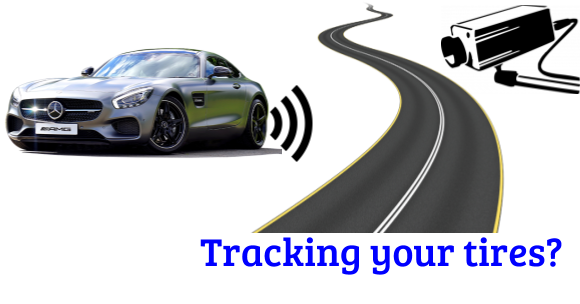
Your car's tire pressure monitoring system broadcasts your location but is anyone listening?
by Ed Sawicki - May 31, 2020
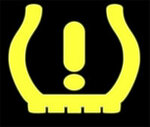
There's a conspiracy theory that says the valve stems on your car's wheels are antennas for GPS units the government has installed in your tires to track your car. Someone has created a graphic that suggests you cut off the valve stem to prevent the government from spying on you. This is meant to be humor because that would deflate your tires.
Also, it's paranoid to think the government is tracking you via your tires.
Not so fast. While there's no GPS unit in your tires and the valve stem is not an antenna, there IS a sensor installed in your wheels that could be used to track your car. First, let's cover the TPMS system. Then we'll cover the privacy concerns. Of course, you can skip ahead to the Privacy Issues section.
TPMS
If your car was made in 2008 or later, you have a Tire Pressure Monitoring System (TPMS) installed. Each wheel has a pressure monitoring sensor that uses radio to communicate pressure information to your car's computer. If one of the tires has inadequate pressure, you'll see an icon light up on your dashboard that's similar to the yellow icon at the top of the page.
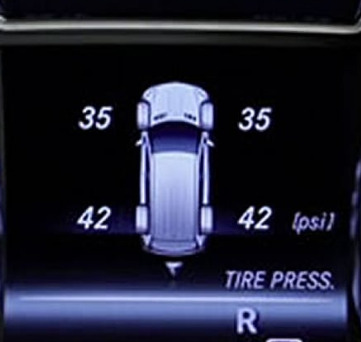
Your car might also show the pressure in your tires similar to the dashboard display shown in figure 1.
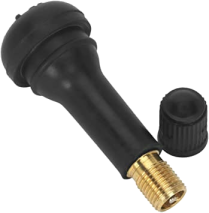
The pressure sensor is installed on each wheel/rim—it's not part of the tire. If your old tire is replaced, the sensor is still there. The sensor is part of the valve stem assembly, but the valve stem is not the antenna for the sensor.
Figure 2 shows a valve stem without a sensor. It can be installed and replaced without having to remove the tire from the wheel/rim. If someone cuts off the valve stem believing that it's an antenna for government surveillance, the repair is quick and not costly.
Figure 3 shows a valve stem with the sensor attached. This must be installed or replaced with the tire removed from the wheel/rim. If someone cuts off the valve stem, the repair is more costly.
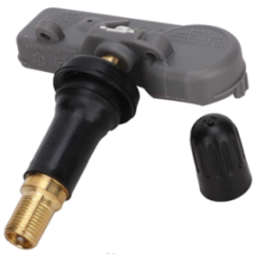
Note that the sensor did not have to be installed on the valve stem. It could have been installed anywhere on the wheel/rim that felt the pressure of the inflated tire. The valve stem was chosen to avoid having to modify the rims, such as drilling and tapping a hole for a screw. Future sensors may be part of the rim and not attached to the valve stem.
Privacy Issues
The sensor is a transmitter that can be received up to 50 feet away. It's signals can be received by anyone—government or otherwise.
Every sensor has a unique identifier. There can be over 4 billion (4,294,967,296) unique identifiers. Given that there are only about one billion motor vehicles in the world today, no two sensors should have the same number. This means that your wheels are unique to you. If the government (or another entity) chose to put receivers along roadways, it could detect your car's wheels as you drive by. Your location could be tracked.
If the government wanted to track your car, they would not choose this method that requires a great deal of infrastructure and maintenance—receivers along the roadway and communications back to Big Brother Central. They'd use existing infrastructure such as the cell phone network.
I think we can put this “The government is spying on my tires” business squarely into the category of conspiracy theory.
Technical details
The sensors transmit on 315 MHz in the U.S. and 433 MHz in Europe. Your car has a receiver listening on that frequency. The sensor contains an accelerometer so it knows when the wheels are turning. They will normally only transmit their pressure values when the wheels are turning above a certain rotation. This is to preserve sensor battery lfe. The pressure is transmitted about once every 60 seconds.
The sensor is also a receiver, listening for a 125 kHz RFID activation signal. When it receives the signal, it sends pressure information even though the accelerometer detects that the wheel isn't turning. A hand-held 125 kHz transmitter is placed near the valve stem to provide this signal.
The distance between the sensor and a receiver with antenna is at least 30 feet.